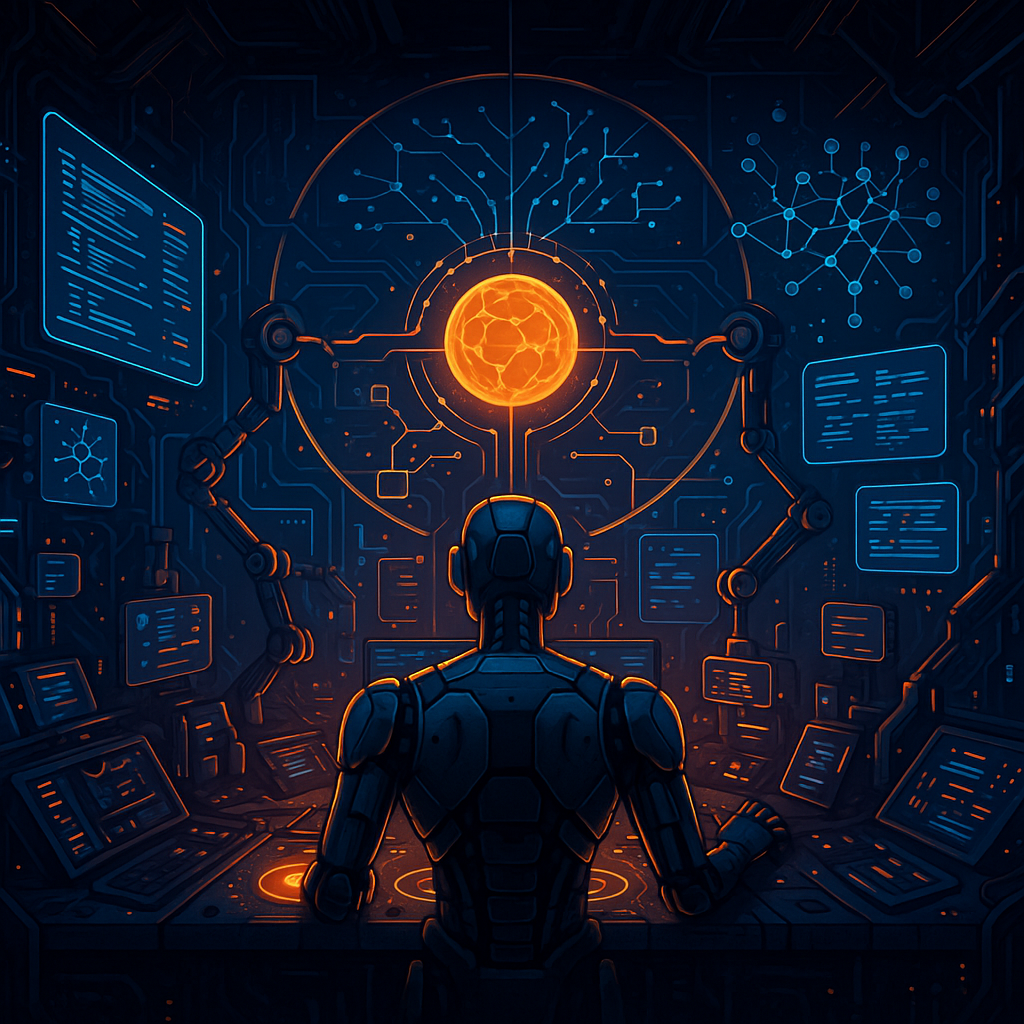Why I brought AI home — and how it powers my personal automation stack.
Introduction: Why Local?
When people hear “LLMs in production,” they often think of cloud APIs like OpenAI or Anthropic. But for me, running local models is not a side experiment — it’s a core pillar of how I architect software.
I’ve been building an autonomous system called Guardian — a self-hosted AI-powered automation framework that orchestrates tasks across my entire life and dev environment. Local LLMs are what allow Guardian to operate privately, securely, and continuously, without needing external API calls.
This post is a walkthrough of how I actually use local LLMs in production, which tools and models I rely on, and why I think every serious developer should at least experiment with a local-first setup.
My Local LLM Stack
I run most of my models on a dedicated local server (mini PC with 32GB RAM), and orchestrate the whole thing through Docker + systemd + Guardian’s own task engine. Here’s what’s typically active:
🔁 Ollama – My Local Model Host
- Acts as the local API layer for models like:
llama3:8bdolphin-mixtraldeepseek-coder
- Used for: general reasoning, agent loops, summarization, task generation.
🧠 mxbai-embed-large – Embedding Generator
- Feeds vectors into Qdrant for semantic memory and similarity search.
- Used by Guardian’s memory system to “recall” related context.
👁️ LLaVA / MiniGPT – Visual Reasoning
- Used in my vision microservice for screenshot analysis, camera feeds, and OCR augmentation.
- Helps Guardian interpret visual input as part of its automation flows.
🧏 Whisper & Coqui – Audio + Voice
- Whisper handles transcription.
- Coqui clones my voice for synthesized outbound responses.
- Powers voice interfaces and self-documenting meeting agents.
Real-World Use Cases
These aren’t just science experiments. I use these daily in:
🛠 Software Development Automation
- Guardian writes code, creates PRs, and documents changes.
- Local LLMs generate unit tests and review diffs — without API lag or cost.
🧾 Personal Ops & Life Automation
- I send myself receipts, PDFs, or emails — and Guardian reads, tags, stores, and files them.
- If there’s a due date or payment, it schedules reminders or builds workflows automatically.
🧠 Memory-Augmented Interactions
- When I chat with Guardian (via Open-WebUI or voice), it pulls relevant documents, notes, or past decisions from Qdrant-enhanced memory.
- It’s like talking to a version of myself that never forgets.
Why Local Beats Cloud (For Me)
Running this locally gives me:
- Full Data Privacy — nothing leaves my network.
- Instant Inference — no rate limits, no latency spikes.
- Lower Long-Term Cost — I pay once for hardware and run forever.
- Offline Capability — my system works even if the internet doesn’t.
Is it more work? At first, yes. But the control and extensibility are unmatched. I’m not just using AI — I’m building with it, and shaping it around how I work.
Tips If You’re Considering This
If you’re ready to try local LLMs:
- Start with Ollama – It’s dead simple and supports most of the popular models.
- Run Qdrant or Chroma – Give your LLM memory.
- Choose Your Models Wisely – Don’t just chase benchmarks — pick based on purpose (code, reasoning, speed).
- Use Docker or Nix – Keep your stack modular and reproducible.
- Watch RAM + VRAM – LLMs eat memory. Tune carefully.
Final Thoughts
Running LLMs locally isn’t just a geek flex — it’s a philosophy. It’s about control. About building sovereign systems. About treating AI not as a service, but as an extension of your environment and your cognition.
In the future, I think most advanced developers will run their own models — just like we host our own databases or APIs. The tooling is ready. The hardware is accessible. And the upside is enormous.
Up next in this series:
👉 How I Connected Supabase, Qdrant, and Ollama into a Fullstack AI Platform
👉 The Local Memory System That Powers My AI Agents
👉 Building an Autonomous Codegen System with Local LLMs


Leave a Reply